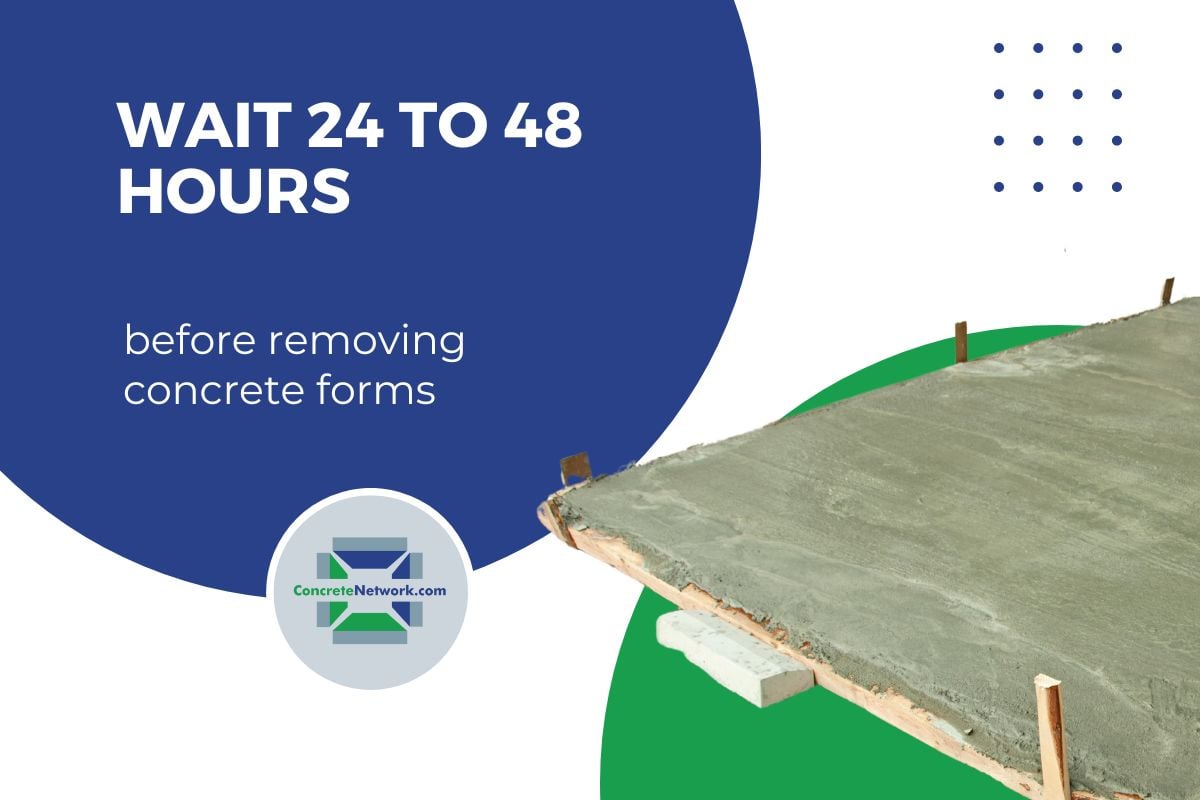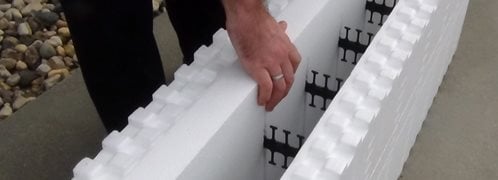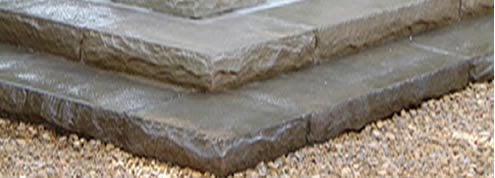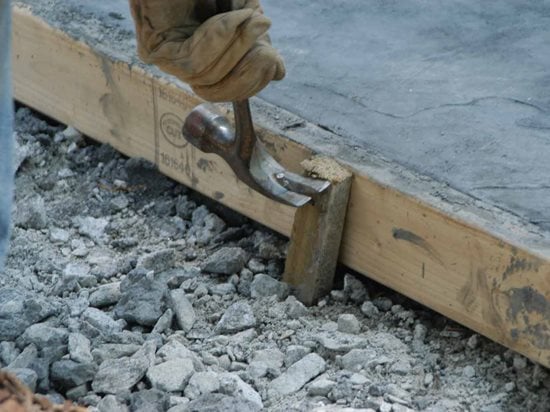- Concrete forms home
- Concrete form liners: Textured form liners for cast-in-place concrete
- Types of insulating concrete forming systems
- Step Forms
- Related Information:
- Concrete Molds: Forms for countertops, sinks and furniture
- Concrete countertop forming videos
When to Remove Concrete Forms From a Slab
Knowing when to remove concrete forms is a critical factor in ensuring the success of your project.Like molds for Jell-O, concrete forms are indispensable on decorative concrete projects where you need to hold freshly poured concrete in place until it sets and assumes the desired shape.
Not only is it essential to assemble the forms properly, knowing the optimum time to remove them after concrete placement is equally important. Removing (or stripping) the forms too soon can lead to structural instability, cracking and even concrete failure, so it’s important to plan accordingly based on your specific project. Here’s a breakdown of the timing, and the factors that can influence how long concrete forms should remain in place.
What is the minimum time before removing concrete formwork?
Generally, you can remove formwork once the concrete has gained sufficient strength — through a process called curing — to hold its shape without the forms. Although the entire curing period of concrete takes about a month, you can remove the forms much sooner, generally 24 to 48 hours after pouring and finishing the slab. However, the timing will vary for each project due to differences in the weather, the concrete mix design, load-bearing requirements and other factors. On some commercial projects, the required interval may be dictated by job specifications.
What factors influence the timing of form removal?
The rate of concrete strength development and hardening is greatly influenced by temperature. In warm weather, concrete is able to achieve higher strengths in a shorter period of time. Conversely, in cold weather (below 50° F), concrete sets very slowly, which can prolong the time before you can safely remove formwork (see Why Is Cold Weather a Problem When Pouring Concrete?).
The composition of the concrete mix — including the type of cement used, admixtures, and the water-cement ratio — can also influence concrete curing times and strength development. For example, a concrete mix made with a fast-setting cement will have higher strength gain in a shorter period of time than concrete made with ordinary portland cement.
Concrete thickness is another factor impacting the timing of form removal. In general, thicker slabs will require longer curing times than thinner slabs to achieve adequate strength for formwork removal. Learn more about slab thickness requirements for concrete driveways.
How do I know the timing is right for concrete form removal?
Often a visual inspection will give you a clue. If the concrete has hardened and pulled away from the sides of the forms slightly, it typically has set sufficiently for form removal.
A more reliable gauge is to conduct tests before stripping the forms to ensure the concrete has achieved the required strength. There are a number of non-destructive testing methods you can use to assess the concrete’s integrity without causing damage. (See Testing of Hardened Concrete.)

Tip: If you have any doubts about the timing of formwork removal, consider consulting a structural engineer who can help you account for variables specific to your project, such as load-bearing requirements and the concrete mix design.
What happens when concrete forms are removed too soon?
Many concrete contractors remove forms the day after the pour is completed, often because they want to reuse them for another project. However, it’s important not to rush the process, even if the project must be delayed a day or two. Removing forms prematurely can compromise the concrete’s strength and result in cracking and deformation. In a worst-case scenario, early formwork removal can even lead to concrete collapse and failure.
Can you leave concrete forms on too long?
You won’t harm concrete by leaving forms in place longer than necessary. You will simply be giving the concrete more time to cure, which will help to ensure its structural integrity. However, if the forms need to be reused for another project, leaving them on too long can result in delays and unnecessary expenses without benefiting the overall quality of the concrete.
Can you leave concrete forms in place permanently?
Most types of forms for concrete slabs, especially those made from wood, should not be left in place. Not only can the wood begin to rot and attract termites, leaving the formwork on display is an eyesore and will make the slab look unfinished. It’s also more economical to remove and reuse the forms whenever feasible.
Can I walk or drive on concrete right after form removal?
Even when concrete appears to be hardened, it may not be strong enough to support stress or heavy loads. That’s because the concrete slab is still curing and gaining strength long after you remove the forms. Generally, it’s okay to allow people to walk on the surface after 24 to 48 hours. But keep all vehicle traffic off the concrete for 7 to 10 days, at which point the slab will have gained enough strength to support a car. Learn more: How Long to Wait Before Driving on New Concrete.
 Insulated Concrete Forms
Fox Blocks is the basis for successful foundations, walls and buildings
Insulated Concrete Forms
Fox Blocks is the basis for successful foundations, walls and buildings
 Form Liners
Priced from $42 - $175
Form Liners
Priced from $42 - $175
 Brickform Step Liners
& Edge Form Liners
Brickform Step Liners
& Edge Form Liners





